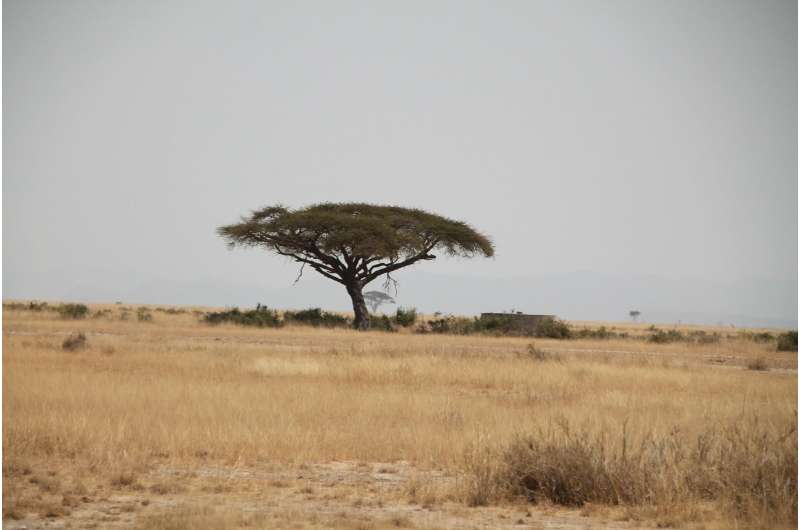Credit: CC0 Public Domain
Understanding the patterns underlying vegetation distribution is vital for creating predictive models to forecast responses of natural systems to global change. Savanna ecosystems cover at least 40 percent of the global tropics, but the distribution of vegetation in savannas has long evaded understanding and characterization, making it impossible to fully capture within such a model. According to a new study published May 13th, 2019 in the journal Proceedings of the National Academy of Sciences, airborne surveys show that, on a large scale, the spatial arrangement of savanna trees follows distinct patterns that can be described mathematically regardless of variation in environmental factors.
"Concluding that some universal process governs spatial patterns in tree distributions may be premature," said lead author Carla Staver, an assistant professor of Ecology and Evolutionary Biology at Yale University. "However, we can say that, although the tree layer may look unpredictable locally, at scales relevant to prediction, such as global vegetation models, vegetation is instead strongly structured by regular statistical distributions."
These findings were derived from LiDAR data collected in Kruger National Park in South Africa by the Global Airborne Observatory (GAO) at Arizona State University's Center for Global Discovery and Conservation Science. The GAO is an airborne laboratory directed by Dr. Greg Asner that houses advanced Earth mapping technologies. Past work to determine such patterns relied on small-scale plots that failed to reveal discernable patterns or identify relationships between environmental factors, like rainfall or soil characteristics, and distribution. The high-resolution LiDAR data enabled a closer examination of tree clusters, and the large scale of the area surveyed uncovered patterns that are not discernable at smaller scales. The pattern of clusters they found at the larger scale can be explained neatly by a power law distribution, which captures significant statistical correlations that cannot be applied at a smaller scale.
"When you are looking at things from the ground, what you see is a messy jumble," Staver said. "What we found was still a jumble, but it was a very structured jumble."
Going forward, Staver and her colleagues plan to investigate whether such mathematical laws also govern the distribution of vegetation in other ecosystems. Future work also includes broadening the scope of the study to include more diverse environmental variation in the landscape surveyed.
More information: A. Carla Staver et al, Spatial patterning among savanna trees in high-resolution, spatially extensive data, Proceedings of the National Academy of Sciences (2019). DOI: 10.1073/pnas.1819391116
Journal information: Proceedings of the National Academy of Sciences
Provided by Arizona State University























